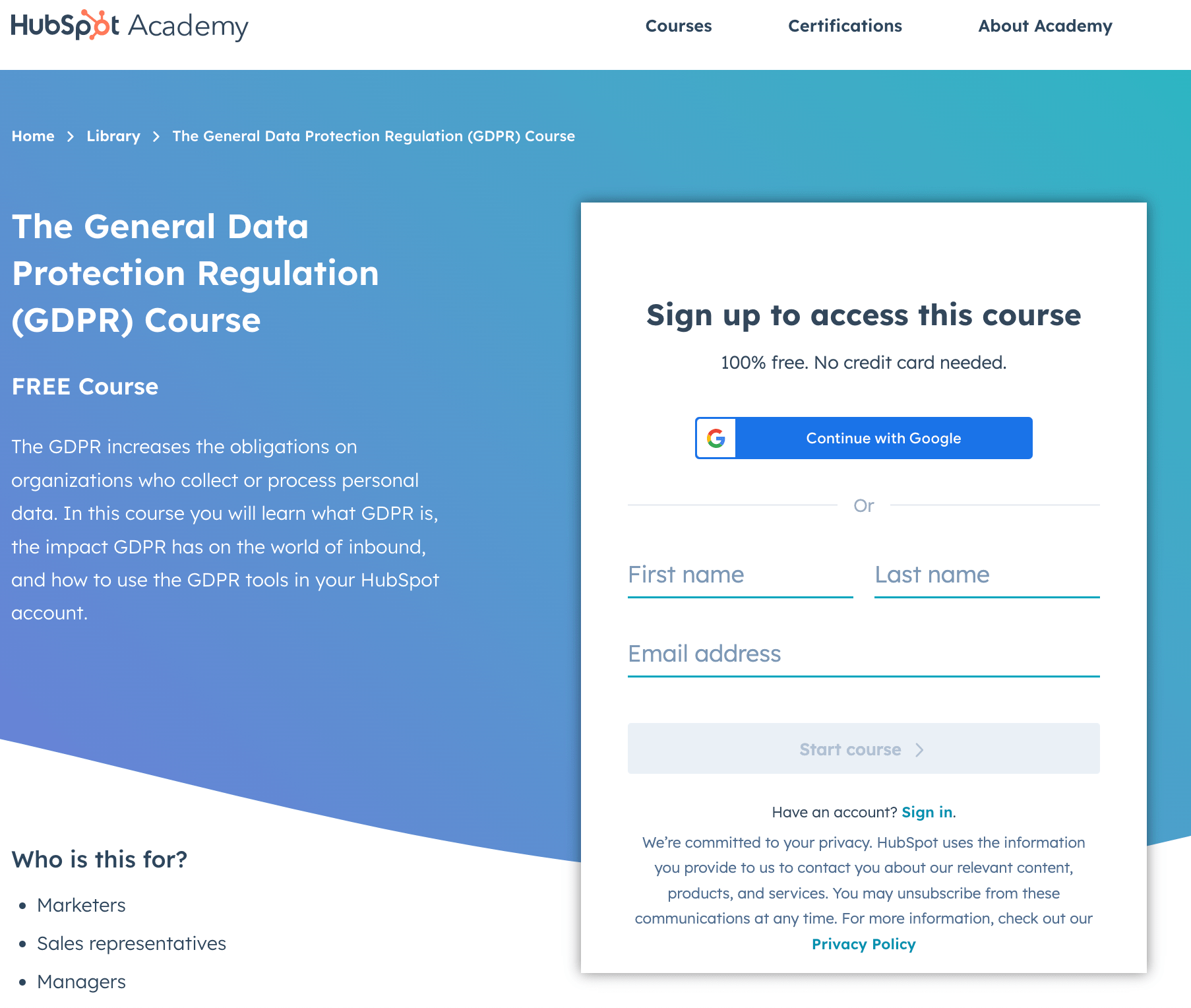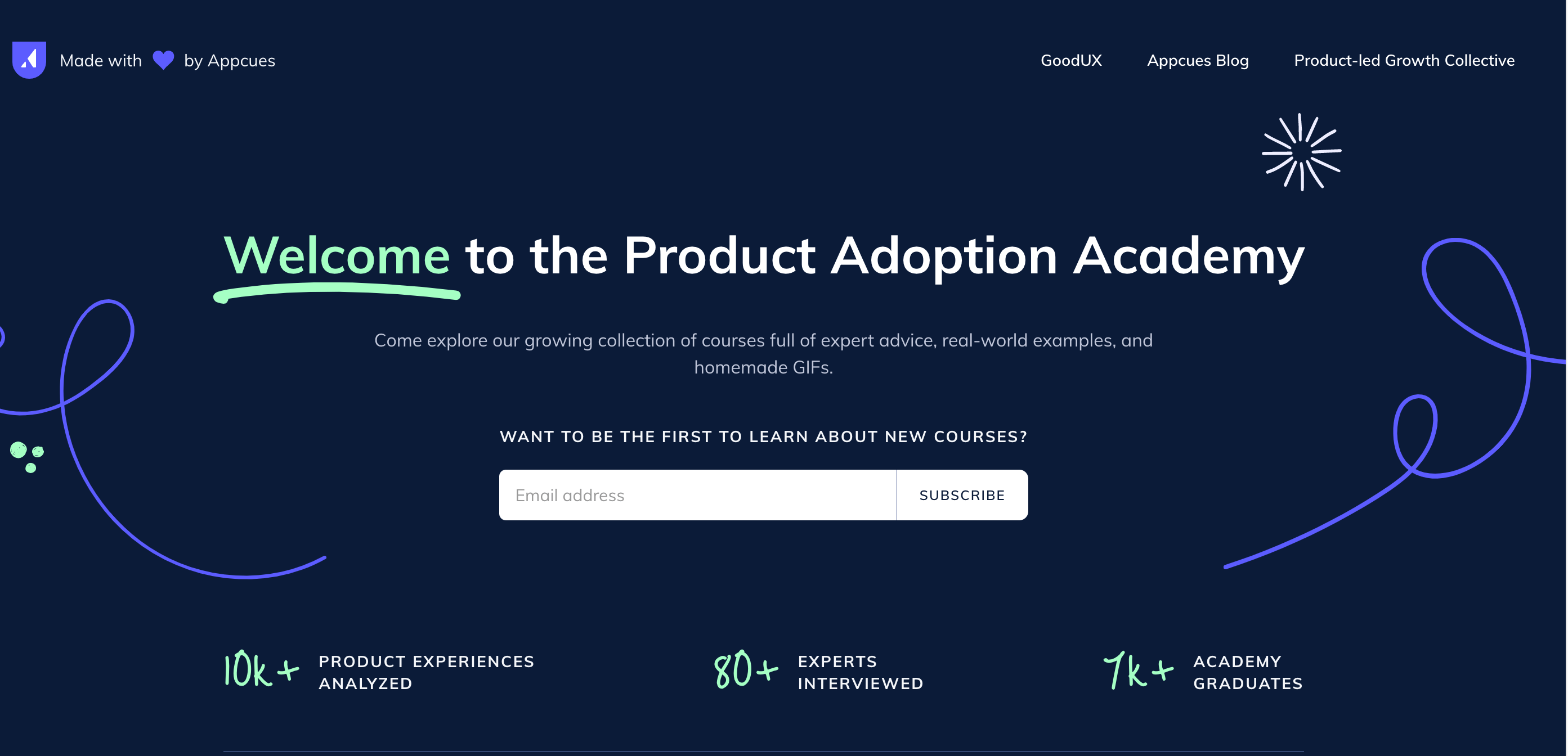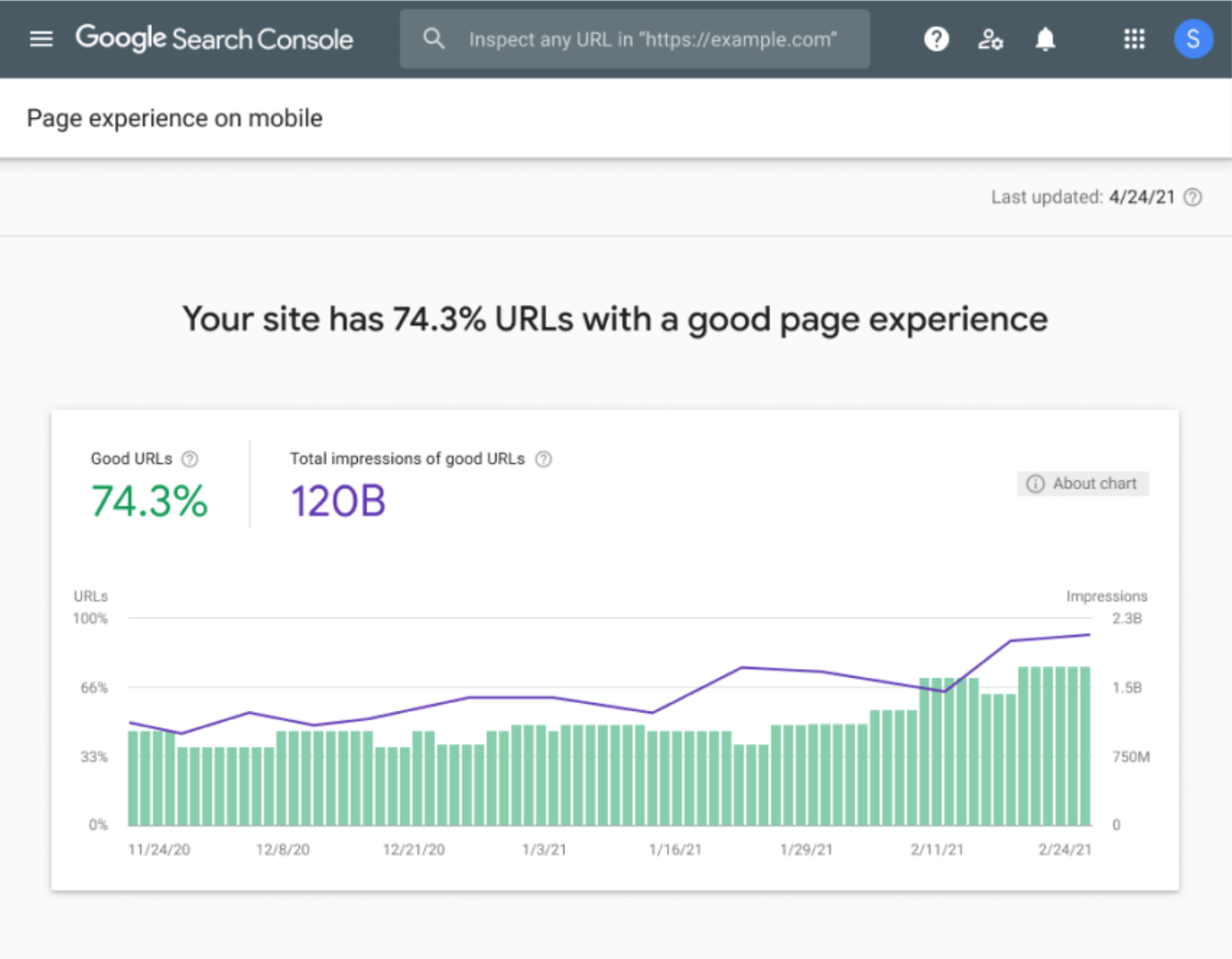Learning management systems (LMS), customer academies, and search engine optimization (SEO) aren’t commonly used in the same sentence—but they should.
While companies have historically used training to drive customer outcomes—think higher NPS, retention, and recurring revenue—it’s spreading its wings and helping them in other ways.
Today, companies across industry lines are tapping into the power of customer education to build brand awareness, thought leadership, establish authority, and open net-new acquisition channels.
They’re doing that by getting their academy at top of Google.
Let’s explore how to do that and why it can be a game-changer for your customer education program and bottom line for years to come.
SEO isn’t for Everyone (and That’s Ok)
I don’t mean this in a bad way. Optimizing your academy for Google is something every customer education team can invest in, but there’s a prerequisite: have a public-facing academy.
If optimizing your academy for Google is on your to-do list this year, there has to be open access.
The HubSpot Academy is a great example:
This course on GDPR is available to everyone, including my mom, who, obviously, isn’t a HubSpot customer.

Anyone can access the content directly by going straight to HubSpot’s website or by searching for it on Google (see below). (P.S. That’s the SEO angle in play.) Both paths work and your target audience into your academy’s proverbial doors.
For context, I searched for “SEO training certifications.”
Other public-facing academies include ahrefs and Appcues.

At the end of the day, whether or not you optimize your customer academy will depend on who you want to use it.
-
Just your customers = No
-
Everyone = Yes
If you want everyone, SEO is in play.
How to Get Your Academy to Rank at the Top of Google
So, how do you get Google to rank your content #1?
Unfortunately, HubSpot didn’t launch this certification course and have it magically appear at the top of Google. A lot went into it soaring up the charts.
While there’s no one-size-fits-all answer, there are some SEO strategies you can keep in mind.
Put Your Customers First
Many moons ago, simple on-page SEO tactics were enough to rank at—or near—the top of Google. Put your keyword, like “best SEO certification courses,” in the title (H1) and thoughtfully throughout the content, and boom, you’re there.
Those tactics still hold weight in Google’s eyes, but they’re not what they once were—and Google’s made that clear.
Today, Google prioritizes the experience; it’s why they launched Page Experience in Search Console in 2021.
What Does Page Experience Measure?
There’s a lot that goes into page experience, but I’ll boil it down:
-
Core Website Vitals: The speed, responsiveness, and stability of the page.
-
Mobile Usability: A mobile URL, i.e., someone accessing your academy via their mobile device, must have no mobile usability errors. Said another way, your academy “functions” as intended on mobile devices.
-
HTTPS Status: The page is served over HTTPS, i.e., your academy is secure.
There’s more to it, but at the end of the day, Google wants your content to shine. In the context of customer education, that means your academy is easily accessible via desktop and mobile devices, it loads quickly and is secure (that’s a super high-level overview).
If you need more proof that Google’s all-in on experience, consider this: A desktop version of page experience arrived earlier this year.-min.png?width=800&height=269&name=google-page-experience-desktop-vs-mobile-800x269%20(1)-min.png)
Put Quality Over Quantity
SEOs are familiar with the acronym E-A-T. If you’re not, it stands for Expertise, Authoritativeness, and Trustworthiness. While it may not a ranking factor in the traditional sense, it’s still important.
At the end of the day, the content that ranks at the top is content Google considers the “best;” it wants to provide people with the information and answers they’re looking for.
For instance, when I search for “who’s the greatest baseball player of all time?” I want the answer. Google’s going to show me content that it believes will provide that.
Here’s another proof point that Google cares about the actual content: it added an “E” to E-A-T.
Google’s announcement about E-A-T gaining an “E,” said, “Does content also demonstrate that it was produced with some degree of experience, such as with actual use of a product, having actually visited a place or communicating what a person experienced? There are some situations where really what you value most is content produced by someone who has first-hand, life experience on the topic at hand.”
Google also noted that “Double-E-A-T" is now part of the updated search rater guidelines.
When people come to your academy, they expect something of value.
Think about real-life situations: When you need help with your taxes, are you going to go to TurboTax or a random guy you met at the coffee shop?
If you want to get better at baseball, are you going to ask Derek Jeter or your Little League coach?
In both of these cases, you’ll do the former. Google looks at your academy the same way.
Does the person delivering the content actually know what they’re talking about? Is the website considered an authority on the topic?
Google’s going to send someone to the content it deems the most authoritative on a topic. It’s why HubSpot shows up for so many terms related to inbound marketing and SEO; Google sees its content as the go-to for the topic.
For your academy to rank at the top of Google, you need to show it that you’re the go-to resource and trusted authority on whatever.
Invest in Technical SEO
Google’s shifting the way it “grades” content, but that doesn’t mean you should neglect the tried-and-true technical SEO tactics that have largely stood the test of time.
Here are a few to consider:
-
Create an XML sitemap, i.e., a file that lists a website's essential pages
-
Use robots.txt to tell Google (and other crawlers) which URLs to, well, crawl.
-
Focus on SEO-friendly URL structure
-
Fix HTTP errors
-
Look at redirects to make it easy for Google to crawl your academy
A technical audit of your academy has one goal: Make sure Google can easily find and crawl your academy.
Creating something and pushing it live is great, but that doesn’t mean Google will find it. If it can’t, your SEO efforts are for naught.
Create Content with Google in Mind
One of my first projects out of college in the content marketing world was to create an SEO for the company I was working for. I was familiar with SEO, but not nearly to the level required to create something so all-encompassing that the entire company would find value. Nevertheless, I built it—and I was satisfied with the result.
Here’s the thing: Less than a year later, much of it was outdated because Google changed its algorithm.
While Google’s always tweaking its algorithm in the best interest of users, there are still a few SEO best practices that’ll help you get your academy content to shine:
Focus on Links
I’ll be the first to admit that I’ve always considered links the gold standard for SEO. In my eyes, they’d make or break my content strategy because Google used them as “votes of confidence." I don’t think that thinking was flawed, but times have changed.
In fact, Google recently confirmed that links are losing some of their luster. I still think they’re important, though, especially from an internal standpoint.
When you’re creating content for your academy, pay attention to the internal linking structure and the journey you’re taking people on from one piece of content to the next.
“You may also like” sections are typically solid examples of this as they thoughtfully take people to related content based on what they’re currently consuming.
Update Your Content Regularly
Keep close tabs on how your content is ranking. If you’re not happy with its current position, ask yourself why.
Are people—and Google—able to find it?
Are they spending a good amount of time consuming it?
What are they doing after they read it?
Use these signals to determine the impact of your content and make updates accordingly.
If you’re using an LMS, you can take advantage of the analytics and built-in feedback loop via surveys and forms to get a real insight into how people perceive your content. Then make data-driven decisions about how to get your content headed in the right direction.
Be Smart About Keywords
I’m a sucker for keyword research, but don’t let traditional research strategies, i,e., going after the most traffic, influence your content plan.
Instead, take the keyword research you do have and combine that with what you know about your audience.
For example, are you creating a category and notice a lot of the people are struggling to understand what you’re trying to do or that they have a problem your product can solve? If so, create content to address that.
Drift has done a great job of this over the years. When the company was ramping up its engine, conversational marketing wasn’t really a thing. But over time—and with plenty of content—they educated the market, introduced their product, and took over the industry.
Match Search Intent
This is a big one.
Why are your customers searching for a given topic?
For example, when I searched for SEO certifications, I was looking for a way to level up my SEO game. As a result, I expected the content returned in the search engine results pages (SERPs) to help me do that.
When you’re creating your content, make sure you’re doing so with intent in mind.
When they click on the link to your article, course, video, etc., will it answer their question? If not, it’s time to revise. Google will thank you.
Why It's Time to Prioritize SEO
I can come up with a long list of reasons why you should invest in SEO. That said, I keep coming back to two: it provides a better experience and gives you a competitive advantage.
Here’s what I mean on both fronts:
A Better User Experience
Many LMS features are built to make it easy for you to easily deliver content to your customers.
For example, you can automate emails to send to new customers or people who signup for a course. Similarly, the accessibility of most academies make it easy for people to effortlessly get the content they need to be successful.
That said, why not give people another avenue? That avenue: Google.
Optimizing your academy—and getting it to the top of Google—gives people yet another way to find and access the content they need to make buying decisions, level up their professional lives, and more.
A Competitive Advantage
It doesn’t matter what market you’re selling in—you’re swimming in a sea of competition. The LMS market is more than 1,000 learning platforms strong, many fundamentally do the same thing. The low cost of entry in many industries and rapid innovation will make this a constant challenge.
The lack of parity and product-based differentiation is forcing the hands of companies across industry lines to find more ways to stand out. Said another way, competitive advantages are few and far between.
Staying in Google’s good graces and showing up for relevant keywords can be an effective way to increase your visibility, establish authority, and build credibility with your audience. This can also create an acquisition channel you can rely on to fill your pipeline with in-market buyers.
Just think about the tangible impact HubSpot’s academy has on its bottom line solely because it’s established an enormous presence in its industry and gained credibility with people who perfectly meet their ideal customer persona (ICP).
Reach out today to learn more about how Northpass can help you get your academy ranking #1 on Google.

.png?width=3251&height=1107&name=NP_ByGS_ColorLogo%20(1).png)


